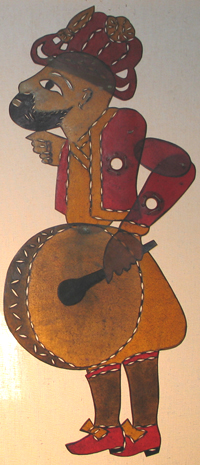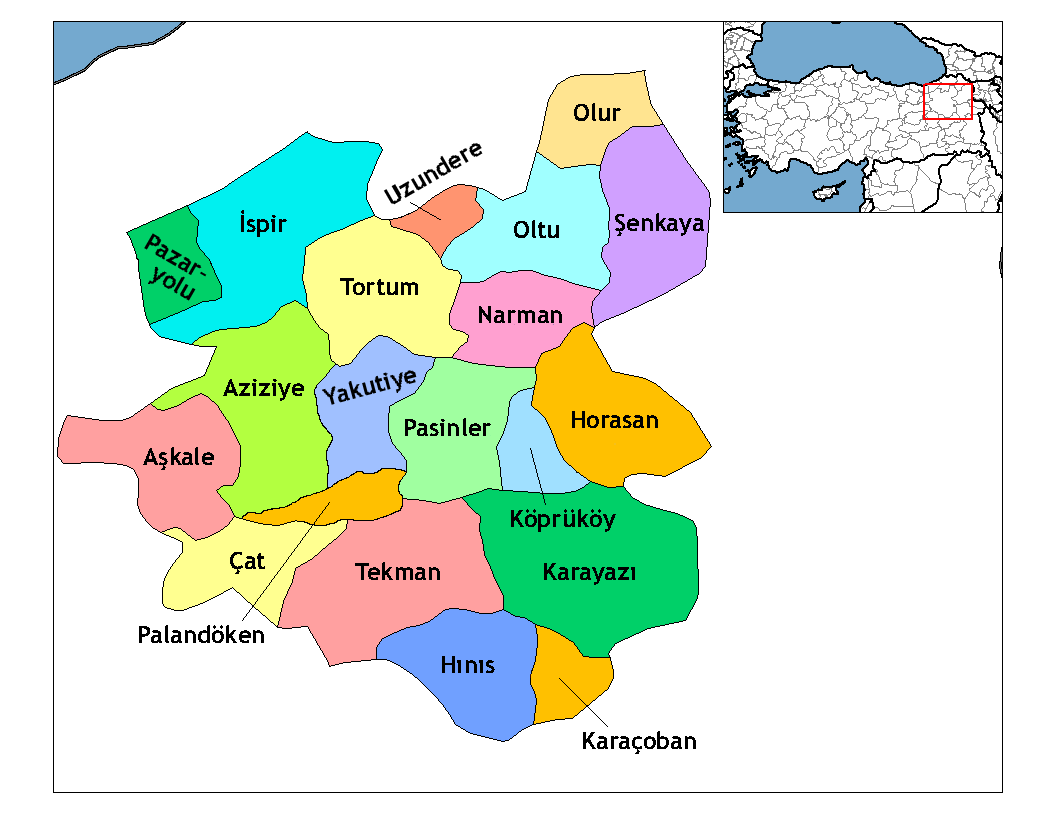|
Bar (dance)
Bar is a Turkish folk dance from Eastern Turkey. The word bar is from the Armenian word "Պար" (bar) which means dance. With their structure and formation, they are the dances performed by groups in the open. They are spread, in general, all over the region of Eastern Anatolia, especially in Artvin, Ardahan, Erzurum, Bayburt, Ağrı, Kars, and Erzincan provinces. The characteristic of their formation is that they are performed side-by-side, hand, shoulder and arm-in-arm. Woman and man bars are different from one another. The principal instruments of bar dances are davul and zurna (shrill pipe). The dominant measures in bars are and . Occasionally measures of and are also used. Aksak measures which are the most characteristic measures, in particular, of the Turkish folk music Turkish folk music (''Türk Halk Müziği'') is the traditional music of Turkish people living in Turkey influenced by the cultures of Anatolia and former territories in Europe and Asia. Its unique s ... [...More Info...] [...Related Items...] OR: [Wikipedia] [Google] [Baidu] |
Bayburt Province
Bayburt Province ( tr, ) is a province of Turkey. Located in the Northeast Anatolia region of the country, the capital city is Bayburt, and with a population of 74,412 is the least-populous province in Turkey. Geography Bayburt is traversed by the northeasterly line of equal latitude and longitude. Districts Bayburt province is divided into 3 districts (capital district in bold): * Aydıntepe * Bayburt * Demirözü Historical places The most important places in Bayburt Province are: * Bayburt Tower * Saruhan Tower * Aydıntepe underground city * Mausoleum of Dede Korkut * Mausoleum of Şehit Osman * Traditional Bayburt houses * Ulu Mosque * Pulur (Gökçedere) Ferahşat Bey Mosque * Sünür (Çayıryolu) Kutlu Bey Mosque * Yukarı Hınzeverek (Çatalçeşme) Mosque * Bedesten (covered bazaar) * Varzahan Armenian Church Cities and towns *Bayburt City 32,141 inh. *Aydıntepe City 2,663 inh. * Gökçedere Town 2,389 inh. *Demirözü City 2,137 inh. *Arpalı Town 1,934 inh. * ... [...More Info...] [...Related Items...] OR: [Wikipedia] [Google] [Baidu] |
Aksak
In Ottoman musical theory, ''aksak'' is a rhythmic system in which pieces or sequences, executed in a fast tempo, are based on the uninterrupted reiteration of a matrix, which results from the juxtaposition of rhythmic cells based on the alternation of binary and ternary quantities, as in , , , etc. The name literally means "limping", "stumbling", or "slumping", and has been borrowed by Western ethnomusicologists to refer generally to irregular, or additive meters. In Turkish folk music, these metres occur mainly in vocal and instrumental dance music, though they are found also in some folksongs. Strictly speaking, in Turkish music theory the term refers only to the grouping of nine pulses into a pattern of . Some examples are shown below. In jazz The ''aksak'' rhythm is prominently featured in the jazz standard "Blue Rondo à la Turk" by Dave Brubeck. In rock The Belgian experimental rock group Aksak Maboul take their name from this rhythm. See also *Additive rhythm and div ... [...More Info...] [...Related Items...] OR: [Wikipedia] [Google] [Baidu] |
Zurna
The zurna (Armenian language, Armenian: զուռնա zuṙna; Classical Armenian, Old Armenian: սուռնայ suṙnay; Albanian language, Albanian: surle/surla; Persian language, Persian: karna/Kornay/surnay; Macedonian language, Macedonian: зурла/сурла zurla/surla; Bulgarian language, Bulgarian: ''зурна/зурла''; Serbian language, Serbian: зурла/zurla; Syriac language, Syriac Aramaic: ܙܘܪܢܐ/zurna; Tat language (Caucasus), Tat: zurna; Turkish language, Turkish: zurna; Kurdish Language, Kurdish: zirne; Greek language, Greek : ζουρνας; Azerbaijani language, Azeri: zurna) is a double reed wind instrument played in central Eurasia, Western Asia and parts of North Africa. It is usually accompanied by a davul (bass drum) in Music of Armenia, Armenian, Anatolian and Assyrian folk/pop music, Assyrian folk music. Characteristics and history The zurna, like the duduk and kaval, is a woodwind instrument used to play folk music. The zurna is made from ... [...More Info...] [...Related Items...] OR: [Wikipedia] [Google] [Baidu] |
Davul
The davul, dhol, tapan, atabal or tabl is a large double-headed drum that is played with mallets. It has many names depending on the country and region. These drums are commonly used in the music of the Middle East and the Balkans. These drums have both a deep bass sound and a thin treble sound due to their construction and playing style, where different heads and sticks are used to produce different sounds on the same drum. Names Some names of davuls include: *''dhol'' ( hy, դհոլ) *''dawola/davola'' ( syr, ܛܲܒܼܠܵܐ) *''dohol'' ( fa, دهل dohol) *''doli'' ( ka, დოლი doli) *''davul'' ( tr, davul, lit=drum) *''dahol'' ( ku, dahol, sdh, Dîweł) *''davil'' ( ta, davil) *''davula'' ( Sinhala: දවුල) *''tupan'' ( Goranian: tupan) *''daul'', ''tǎpan'', ''tupan'' ( bg, тъпан, тупан) *''goč'', ''tapan'', ''tupan'' ( sr, гоч, тапан, тупан) *''tapan, tupan'' ( mk, тапан, тупан) *''tobă/dobă'' ( ro , tobă) *''tabl'' ( ... [...More Info...] [...Related Items...] OR: [Wikipedia] [Google] [Baidu] |
Erzincan Province
Erzincan Province ( tr, ; ku, Parezgêha Erzînganê) is a province in the Eastern Anatolia Region of Turkey. In Turkey, its capital is also called Erzincan. The population was 236,034 in 2018. Geography Erzincan is traversed by the northeasterly line of equal latitude and longitude. It lies on the Northern Anatolian Fault, why it is often the location for earthquakes like one on 27 December 1939 and the earthquake on the 13 March 1992. Districts Erzincan province is divided into 9 districts (capital district in bold): *Çayırlı *Erzincan *İliç * Kemah *Kemaliye *Otlukbeli *Refahiye *Tercan *Üzümlü History In September 1935 the third Inspectorate General (''Umumi Müfettişlik,'' UM) was created, into which the Erzincan province was included. Its creation was based on the Law 1164 from June 1927, which was passed in order to Turkefy the population. The Erzincan province was included in this area. The third UM span over the provinces of Erzurum, Artvin, Rize, Tra ... [...More Info...] [...Related Items...] OR: [Wikipedia] [Google] [Baidu] |
Kars Province
Kars Province ( tr, Kars ili; ku, Parêzgeha Qersê; hy, Կարսի նահանգ) is a province of Turkey, located in the northeastern part of the country. It shares part of its closed border with Armenia. The provincial capital is the city of Kars. The provinces of Ardahan and Iğdır were until the 1990s part of Kars Province. History In ancient times, Kars ( hy, Կարս) was part of the province of Ararat in the Kingdom of Armenia. The first known people were the followers of Vanand (Վանանդ), for whom Kars was their main settlement and fortress. In 928, Kars became the capital of Bagratid Armenia. In 968, the capital of Armenia was moved to Ani, but Kars remained the capital of the feudal principality of Vanand. The Seljuks quickly relinquished direct control over Kars and it became a small emirate whose territory corresponded closely to that of Vanand, and which bordered the similarly created but larger Shaddadid emirate centered at Ani. The Kars emirate was a vassa ... [...More Info...] [...Related Items...] OR: [Wikipedia] [Google] [Baidu] |
Ağrı Province
The Ağrı Province ( tr, Ağrı ili, ku, Parêzgeha Agiriyê) is a Provinces of Turkey, province in eastern Turkey, bordering Iran to the east, Kars Province, Kars to the north, Erzurum Province, Erzurum to the northwest, Muş Province, Muş and Bitlis Province, Bitlis to the southwest, Van Province, Van to the south, and Iğdır Province, Iğdır to the northeast. It has an area of 11,376 km² and a population of 535,435 as of 2020. The provincial capital is Ağrı, situated on a high plateau. Doğubayazıt was the capital of the province until 1946. The current Wāli#Turkish term, governor is Süleyman Elban. The province is considered part of Western Armenia by Armenians and was part of the ancient province of Ayrarat of Kingdom of Armenia (antiquity), Kingdom of Armenia. Before the Armenian genocide, modern Ağri Province was part of the Six vilayets, six Armenian vilayets. The province is considered part of Turkish Kurdistan and has a Kurds, Kurdish majority. Distri ... [...More Info...] [...Related Items...] OR: [Wikipedia] [Google] [Baidu] |
Erzurum Province
Erzurum Province ( tr, Erzurum ili) is a province of Turkey in the Eastern Anatolia Region of the country. The capital of the province is the city of Erzurum. It is bordered by the provinces of Kars and Ağrı to the east, Muş and Bingöl to the south, Erzincan and Bayburt to the west, Rize and Artvin to the north and Ardahan to the northeast. Okay Memiş was appointed as the governor of the province by a presidential decree on 27 October 2018. The province has an overall Turkish-majority. Geography The surface area of the province of Erzurum is the fourth biggest in Turkey. The majority of the province is elevated. Most plateaus are about above sea level, and the mountainous regions beyond the plateaus are and higher. Depression plains are located between the mountains and plateaus. The southern mountain ranges include the Palandöken Mountains (highest peak Büyük Ejder high) and the Şahveled Mountains (highest peak Çakmak Mountain high). The northern mountain ranges a ... [...More Info...] [...Related Items...] OR: [Wikipedia] [Google] [Baidu] |
Dance
Dance is a performing art form consisting of sequences of movement, either improvised or purposefully selected. This movement has aesthetic and often symbolic value. Dance can be categorized and described by its choreography, by its repertoire of movements, or by its historical period or place of origin. An important distinction is to be drawn between the contexts of theatrical and participatory dance, although these two categories are not always completely separate; both may have special functions, whether social, ceremonial, competitive, erotic, martial, or sacred/liturgical. Other forms of human movement are sometimes said to have a dance-like quality, including martial arts, gymnastics, cheerleading, figure skating, synchronized swimming, marching bands, and many other forms of athletics. There are many professional athletes like, professional football players and soccer players, who take dance classes to help with their skills. To be more specific professional athlet ... [...More Info...] [...Related Items...] OR: [Wikipedia] [Google] [Baidu] |
Ardahan Province
Ardahan Province ( tr, , ku, Parêzgeha Erdêxanê, ) is a province in the north-east of Turkey, bordering Georgia and Armenia. The provincial capital is the city of Ardahan. Demographics With 94,932 inhabitants in 2021, Ardahan was the third least populated city after Bayburt and Tunceli in Turkey. Ardahan Province is populated by Azerbaijanis, Kurds and Turks. However, the area was heterogeneous prior to World War I and the Armenian genocide. In 1886, 43,643 people lived in Ardahan Vilayet of which was Turkish, was Kurdish, Qarapapaq, Greek, Turkmen, Russian and Armenian. The town of Ardahan had a population of 778 of which was Turkish, Russian, Armenian and Greek. In the 1897 Russian Empire Census, Ardahan okrug had a population of 65,763 of which was Turkish, Kurdish, Qarapapaq, Greek, Turkmen and Armenian. Slavs constituted of the population. The town of Ardahan had a population of 4,142 of which was Slavic, Armenian, Turkish and Greek. In 1908, ... [...More Info...] [...Related Items...] OR: [Wikipedia] [Google] [Baidu] |
Artvin Province
Artvin Province ( tr, ; ka, , ''Artvinis p’rovincia''; Laz: ართვინიშ დობადონა ''Artviniş dobadona'') is a province in Turkey, on the Black Sea coast in the northeastern corner of the country, on the border with Georgia. The provincial capital is the city of Artvin. Geography Artvin is an attractive area of steep valleys carved by the Çoruh River system, surrounded by high mountains of Kaçkar, Karçal and Yalnızçam (up to 3900 m) and forest with much national parkland including the Karagöl-Sahara, which contains the Şavşat and Borçka lakes. The weather in Artvin is very wet and mild at the coast, and as a result is heavily forested. This greenery runs from the top all the way down to the Black Sea coast. The rain turns to snow at higher altitudes, and the peaks are very cold in winter. The forests are home to brown bears and wolves. The Çoruh is now being dammed in 11 places for hydro-electric power, including the 249 ... [...More Info...] [...Related Items...] OR: [Wikipedia] [Google] [Baidu] |








